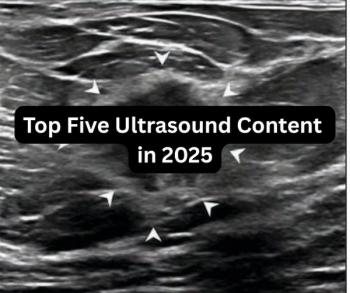
3D display creates stereoscopic images without glasses
Siemens Medical Solutions will spotlight a new kind of medical display at the upcoming RSNA meeting, one that creates volumetric images that appear to hang in space beyond the flat screen of the monitor. Unlike similar systems that have popped up in the past, however, this display will not require the user to wear glasses.
Siemens Medical Solutions will spotlight a new kind of medical display at the upcoming RSNA meeting, one that creates volumetric images that appear to hang in space beyond the flat screen of the monitor. Unlike similar systems that have popped up in the past, however, this display will not require the user to wear glasses.
The new product, due to begin shipping in the next few weeks, offers a more elegant - and fashionable - approach than shuttered lenses or red and blue optics. The aptly dubbed 3D Stereoscopic Display System relies on a projection system built into a desktop monitor that sends separate images to the observer's eyes, up to eight images at one time.
Facilitating this approach is a video screen composed of microlenses matched to individual pixels in the image. Different views of the static 3D image are projected through these microlenses. Some are perceived by one eye, some by the other. They come together in the mind's eye to form a stereoscopic or holographic impression that provides the illusion of depth.
"The advantage over conventional 3D workstations is that you have depth information presented directly to your eyes," said Michael Martens, product manager for the stereoscopic display in Siemens' angiography/x-ray division.
Shown as a work-in-progress at the 2005 RSNA meeting, Siemens' new display is being positioned as an option for Siemens' syngo Workplace. It is intended specifically to visualize vascular structures captured using rotational angiography, but the display of aneurysms, stenoses, and vascular malformations is not constrained to x-ray, according to Martens. The new product can handle data obtained using any angiographic modality, including CT and MR.
Interventionalists and surgeons will want to use the display to visually assess vascular structures and the paths to reach them, he said, because the display simplifies the planning process. On a conventional flat-panel monitor, reconstructions must be rotated back and forth to get a 3D impression. On Siemens' stereoscopic display, the physician needs only to lean one way or another, up and down, to see behind a structure.
"As you move your head, you see different views of the static object," Martens said.
Adding to the allure of the device, the volumetric models can be viewed by more than one observer at the same time. This makes the display useful in consultations or surgical planning sessions, he noted.
Remarkably, with the power off, the stereoscopic display looks much like any other medical-grade LCD. Its external housing and even the screen, despite myriad micro lenses, appear unexceptional. The sticker price is about twice that of conventional displays, but Siemens is bundling the product with its WorkSpace (formerly the Leonardo workstation). The WorkSpace may itself be part of a bundle involving the company's rotational angio hardware and software, or the equipment behind some other modality.
The one inescapable price of Siemens' 3D Stereoscopic Display System, however, is one the medical community is least willing to pay: reduced resolution. The problem comes from bringing together the many facets of 3D, up to eight 2D images. In the process one-eighth of its inherent resolution is lost, Martens said.
The loss of resolution may not be a big factor, however, as the primary application of this tool is to help plan interventions rather than make diagnoses. For those unwilling to compromise, the remedy is only a finger stretch away. Users can change from 2D to 3D and back again by pressing a button on the stereo viewer.
Newsletter
Stay at the forefront of radiology with the Diagnostic Imaging newsletter, delivering the latest news, clinical insights, and imaging advancements for today’s radiologists.




























